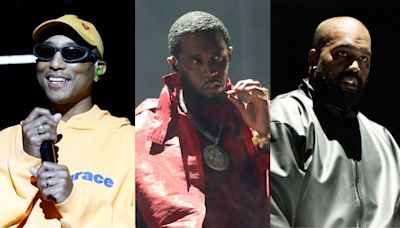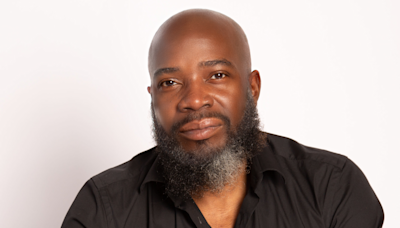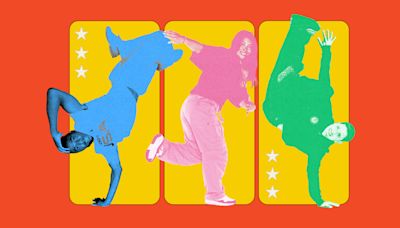Search results
peakpx.com
Street-centered
- But hip-hop began as a street-centered art form that described the realities of black people living in poor, urban neighborhoods. Starting as a particulate blend of spoken-word poetry and music, DJ Kool Herc—known as the father of hip-hop—synthesized the genre by incorporating breakbeats and elements of R&B and soul in 1973.
americanart.si.edu › blog › short-discussion-hip-hop-art-and-their-entanglement
People also ask
What is the art of hip hop?
Is art a part of hip hop culture?
What are the key elements of hip hop culture?
How did hip-hop start?
Jun 21, 2019 · But hip-hop began as a street-centered art form that described the realities of black people living in poor, urban neighborhoods. Starting as a particulate blend of spoken-word poetry and music, DJ Kool Herc—known as the father of hip-hop—synthesized the genre by incorporating breakbeats and elements of R&B and soul in 1973.
- Overview
- Origins and the old school
While there is some debate over the number of elements of hip-hop, there are four elements that are considered to be its pillars: deejaying, or “turntabling”; rapping, also known as “MCing” (emceeing) or “rhyming”; graffiti painting, also known as “graf” or “writing”; and break dancing, or “B-boying,” which encompasses hip-hop dance, style, and attitude, along with the sort of virile body language that philosopher Cornel West described as “postural semantics.” Many also cite a fifth essential component: “knowledge of self/consciousness.” Other suggested elements include street fashion and language.
Read more below: None
How did hip-hop get its name?
There are various explanations for the source of the term hip-hop. However, the most popular one involves Keith (”Keef Cowboy”) Wiggins, a member of the rap group Grandmaster Flash and the Furious Five. The rapper used the words hip/hop/hip/hop, imitating the sound of soldiers marching, in reference to a friend who had joined the army. According to some accounts, Kevin (”Lovebug Starski”) Smith was with Wiggins and helped create the phrase. Hip-hop was subsequently popularized in songs, notably the Sugarhill Gang’s “Rapper’s Delight.”
None
Learn more about Grandmaster Flash and the Furious Five.
Although widely considered a synonym for rap music, the term hip-hop refers to a complex culture comprising four elements: deejaying, or “turntabling”; rapping, also known as “MCing” or “rhyming”; graffiti painting, also known as “graf” or “writing”; and “B-boying,” which encompasses hip-hop dance, style, and attitude, along with the sort of virile body language that philosopher Cornel West described as “postural semantics.” (A fifth element, “knowledge of self/consciousness,” is sometimes added to the list of hip-hop elements, particularly by socially conscious hip-hop artists and scholars.) Hip-hop originated in the predominantly African American economically depressed South Bronx section of New York City in the late 1970s. As the hip-hop movement began at society’s margins, its origins are shrouded in myth, enigma, and obfuscation.
Graffiti and break dancing, the aspects of the culture that first caught public attention, had the least lasting effect. Reputedly, the graffiti movement was started about 1972 by a Greek American teenager who signed, or “tagged,” Taki 183 (his name and street, 183rd Street) on walls throughout the New York City subway system. By 1975 youths in the Bronx, Queens, and Brooklyn were stealing into train yards under cover of darkness to spray-paint colourful mural-size renderings of their names, imagery from underground comics and television, and even Andy Warhol-like Campbell’s soup cans onto the sides of subway cars. Soon, influential art dealers in the United States, Europe, and Japan were displaying graffiti in major galleries. New York City’s Metropolitan Transit Authority responded with dogs, barbed-wire fences, paint-removing acid baths, and undercover police squads.
The beginnings of the dancing, rapping, and deejaying components of hip-hop were bound together by the shared environment in which these art forms evolved. The first major hip-hop deejay was DJ Kool Herc (Clive Campbell), an 18-year-old immigrant who introduced the huge sound systems of his native Jamaica to inner-city parties. Using two turntables, he melded percussive fragments from older records with popular dance songs to create a continuous flow of music. Kool Herc and other pioneering hip-hop deejays such as Grand Wizard Theodore, Afrika Bambaataa, and Grandmaster Flash isolated and extended the break beat (the part of a dance record where all sounds but the drums drop out), stimulating improvisational dancing. Contests developed in which the best dancers created break dancing, a style with a repertoire of acrobatic and occasionally airborne moves, including gravity-defying headspins and backspins.
Britannica Quiz
Another Hip-Hop Quiz
In the meantime, deejays developed new techniques for turntable manipulation. Needle dropping, created by Grandmaster Flash, prolonged short drum breaks by playing two copies of a record simultaneously and moving the needle on one turntable back to the start of the break while the other played. Sliding the record back and forth underneath the needle created the rhythmic effect called “scratching.”
Oct 13, 2023 · How Hip Hop Embraced Fine Art. Although the realms of hip hop and fine art began to intersect in the 80s, the relationship between the two still wasn’t as strong as it is now. This largely boiled down to the fact that rap’s culture was still embedded in the streets and often looked down upon by the upper echelons of the art industry.
This episode is a brief introduction to how the culture of hip hop has collided with art forms such as painting, installation art, photography and film. We follow its beginnings as an artistic and socio-political movement in the Bronx in the early 70s to its many manifestations throughout culture today.
Hip-hop culture has historically been shaped and dominated by African American men, though female hip hop artists have contributed to the art form and culture as well. Hip hop culture is characterized by the key elements of rapping, DJing and turntablism, and breakdancing; other elements include graffiti, beatboxing, street entrepreneurship ...
Aug 9, 2023 · Hip-hop is, simply, “a magical art form,” says Nile Rodgers, legendary musician, composer and record producer. He would know.
Dec 5, 2023 · Central to hip-hop culture are its four original elements: DJing, MCing (or rapping), graffiti art, and breaking (which is also known as breakdancing, b-boying and b-girling). DJing laid...





